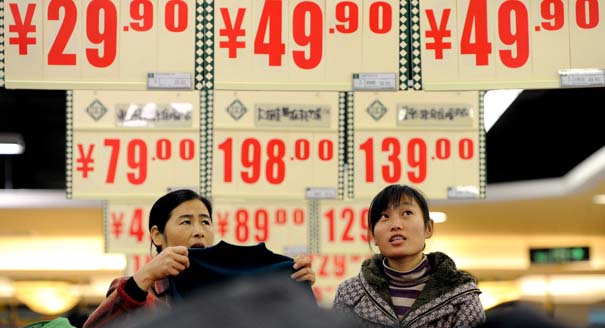Europeans are so concerned with the crisis in Spain and in other peripheral economies that it will come as a surprise to many that we may be at the beginning of another developing crisis. This crisis is unfolding in China, a country that has long been seen, perhaps mistakenly, as a source of global stability and strength.
China’s problem is in some ways surprisingly similar to that of countries like Spain. For many years, low interest rates and rapid growth in loans led Spain into a consumption and investment boom. A large part of the investment boom, as always happens when loans grow too quickly, ended up being wasted in fraud and unprofitable projects.
China too, although for very different reasons, has had tremendous growth in the past decade, but unfortunately it turns out that much of this growth was also caused by wasted investment and fraud. For three decades Chinese growth was driven by very rapid loan growth at interest rates set artificially low by the central bank.
While this may have been a good strategy in the 1990s, when China needed more investment, in the past decade it has resulted in so much infrastructure, real estate, and manufacturing capacity that there is no way for China, and the world, to absorb it. As in Spain, when the money was spent it created rapid growth and great optimism, but now China’s banking system has to deal with a huge number of borrowers who have little capacity to repay the debt out of increased productivity.
But if China brings investment levels down, as Beijing clearly wants, this will bring growth down with it. This year, after growing 10 percent or more for many years, China’s official growth has slowed to 7.6 percent. Even this much lower number, however, underestimates the problem. Few economists believe the official numbers, with some estimates of China’s real economic growth at almost half that level.
The difficulty for China is that it is more reliant on investment to generate growth than any other country in history. It cannot continue to invest because this will lead to even more bad debt and capital losses, but it cannot stop investing because no other part of the economy is capable of generating sufficient growth.
As problems emerge, economists have sharply lowered their long-term growth expectations for China, from 8 to10 percent two years ago to 5 to7 percent today. But history suggests that when an economy like China’s changes its growth model, growth rates drop well below even the most pessimistic forecasts. In fact, I expect that over the next decade China will grow on average by no more than 3 to 4 percent a year.
This has important implications for the world. If Beijing responds to slower growth by protecting manufacturers and encouraging them to sell more abroad, global trade will suffer. If Beijing, however, responds to the slowdown by reforming the financial system and transferring wealth from the state to ordinary Chinese households—both of which are very difficult to do politically—it will create greater Chinese demand for global manufacturers.
For many years the world has been spending money foolishly. The financial crisis, which began in the United States, spread to Europe, and is now about to hit Asia, is simply the recognition of many years of bad policy. The United States is slowly and painfully emerging from its crisis, but Europeans should not be too quick to celebrate. There is still a lot more pain to come in Asia.


.jpg)
.jpg)


